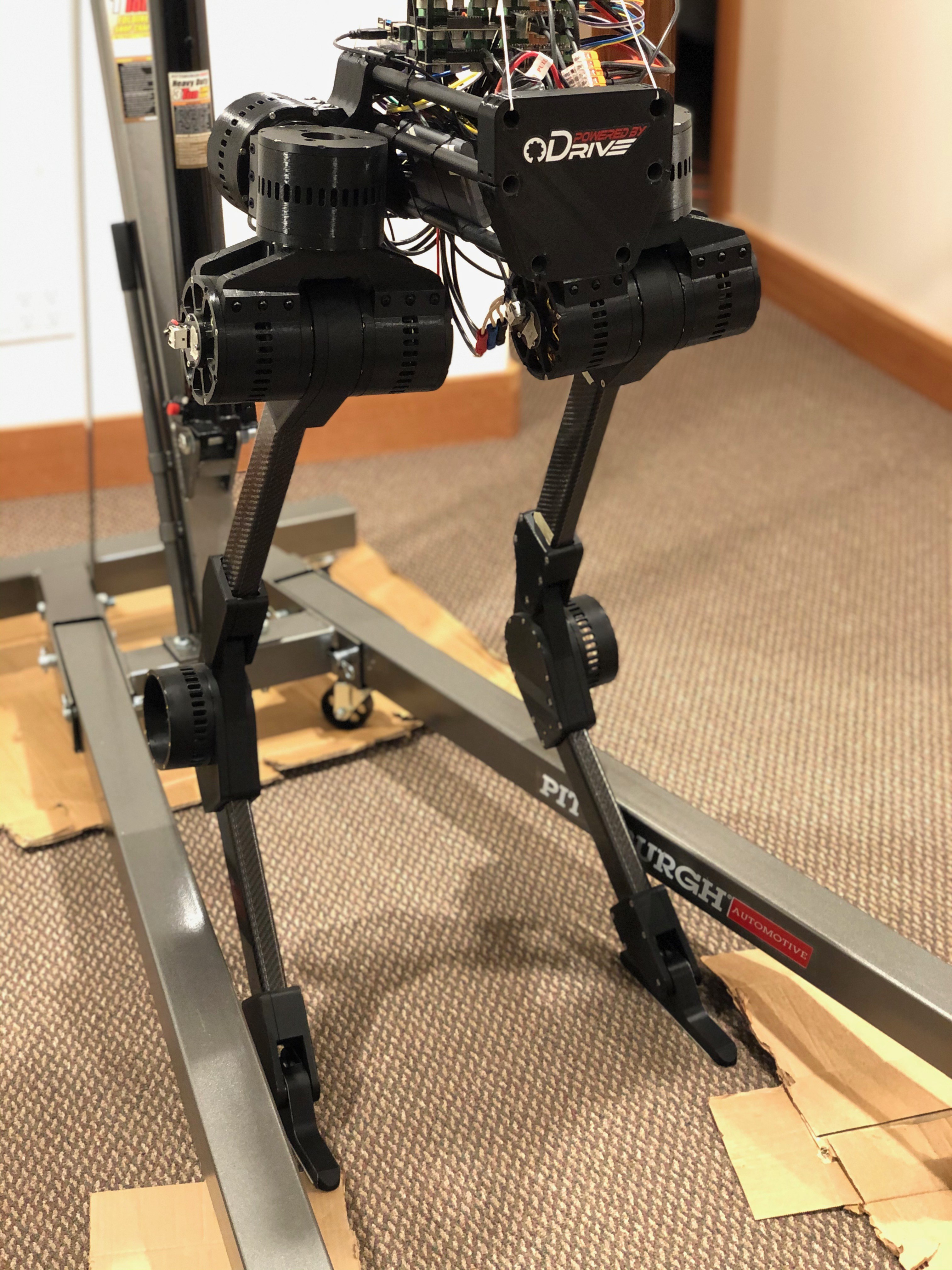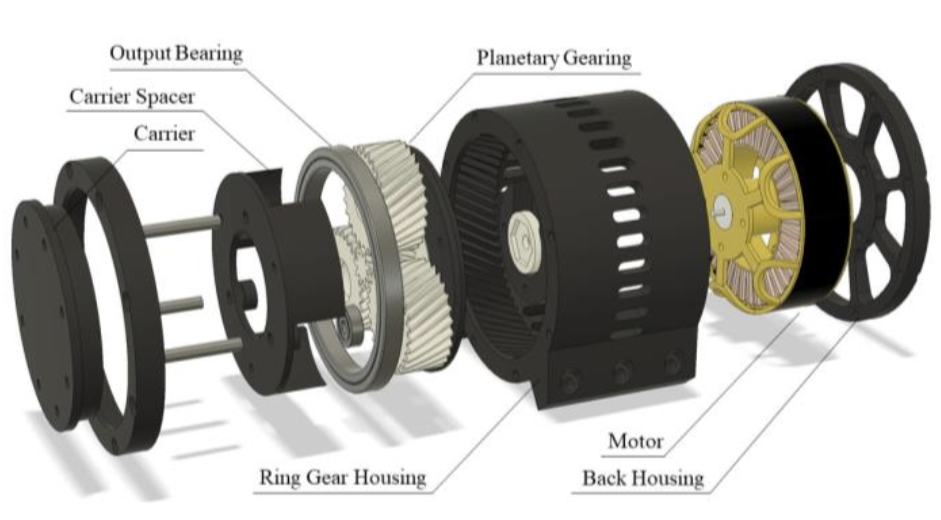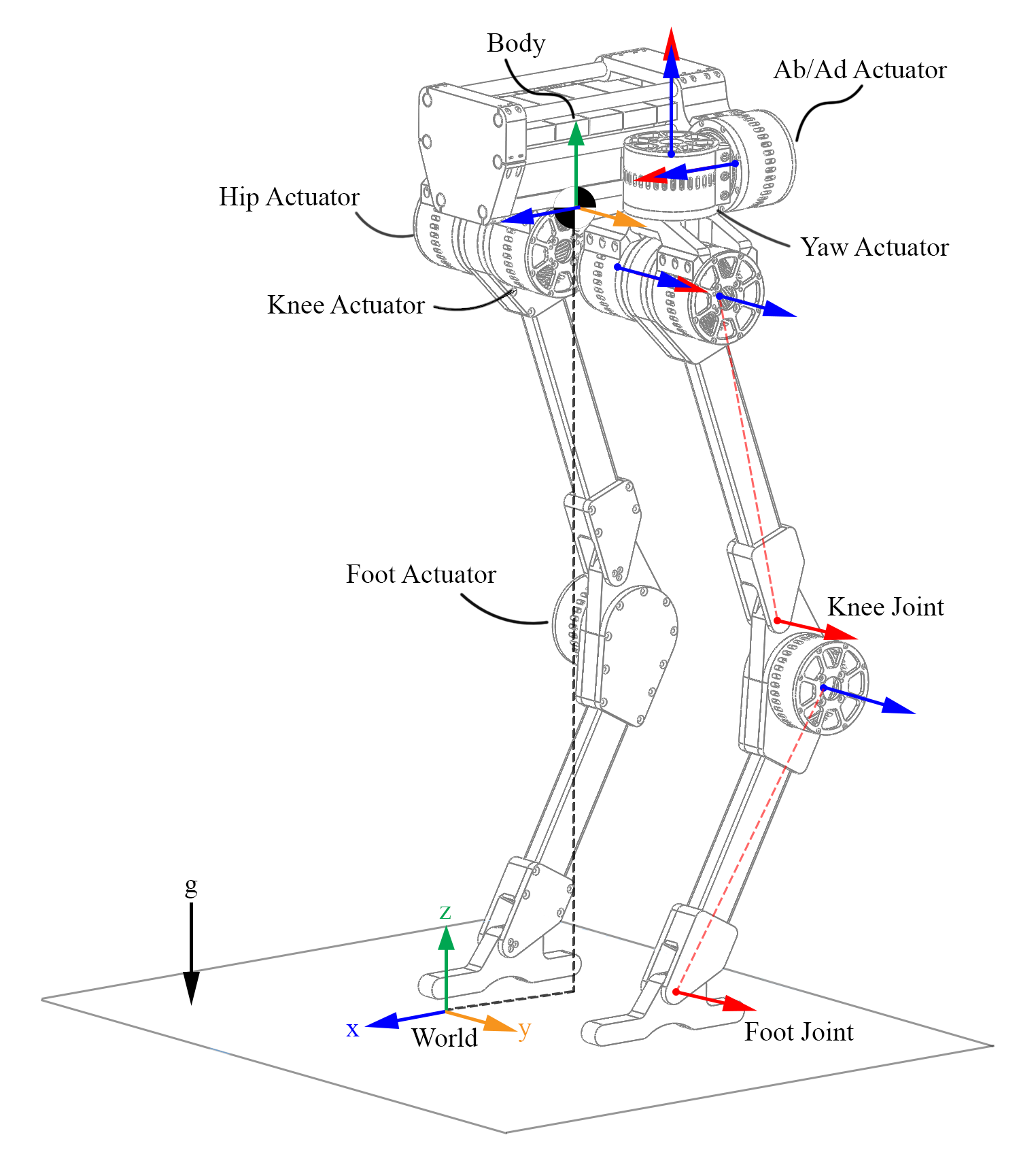INTRODUCTION
Blackbird is a new bipedal robot that specializes in high bandwidth force control and capable of meeting many of the expected demands for legged robots. As a result of its motor design, the robot can use virtual control models that allow it to replicate the compliant properties of springs, dampers, and torque sensing hardware without any extra costs (just math). The reduced mechanical complexity gives the robot a minimal design capable of high quality locomotion, perfect for research labs, college classrooms, and rapid prototyping in industry.
 DESIGN AND CONTROL
DESIGN AND CONTROL
We designed the OpenTorque Actuator specifically for high torque scenarios that rely on high backdrivability; a key criteria for effective legged locomotion. Rather than relying on expensive sensors for measuring motor torque, the system relies on its quasi-direct-drive nature to create high resolution estimates of torque. This proprioception keeps the price of the actuator low, without sacrificing torque sensing capabilities, and also boosts the effective bandwidth of the actuator (allowing it to react faster).

Blackbird stands 1.2 meters tall and weighs roughly 15 kg. Its estimated operation time is 2.5 hours with a 400 Wh battery. The total BoM cost is less than $3000, which is significantly less than any human sized bipedal robot capable of high quality force control. For reference, a single HEBI X-Series Actuator, which uses Series Elastic Technology, is about $3000 and is close to equivalent in force sensing capabilities.
TESTING AND VALIDATION
OpenTorque has a control bandwidth of approximately 30 Hz (3x-4x greater than that of a human) and is larger than many legged robots in the research community. For comparison, some of the best quadruped robots: ANYmal (SEA), HyQ (hydraulic), and StarlETH (SEA) actuators have maximum force control bandwidths of 60 Hz, 20 Hz, and 25 Hz respectively [higher is better] but are exclusive research tools and cost $X0,000+.
Each of Blackbird's legs has 5 Degrees of Freedom (DOF), totaling to 10 actuated DOF for walking. The system is capable of walking, running, spinning, and jumping as a direct result of the actuation hardware and control schemes used. We have also verified it's ability to operate in common human environments by executing maneuvers such as climbing stairs. Testing shows that the robot is capable of maintaining its balance even after receiving a 20 Pound (lbf) kick to the body.

PRODUCT NICHE
Since the robot is too inexpensive for industry settings, we hope that this platform can be used by students, researchers, and professionals interested in legged robot development to learn, test, and verify different control schemes or software stacks. We believe that hobbyists and researchers can hugely benefit from access to a low-cost, highly capable biped platform like the Blackbird, especially since there are no other bipedal robots on the market capable of equivalent force control per dollar. Locomotion is first and foremost a design and control problem long before it is a vision or AI based one. We hope that Blackbird helps bridge the locomotion gap by providing an effective platform for engineers and computer scientists.
We have also begun working Blackbird 2, which will use a new patent-pending motor design and more robust materials (injected molded plastic and aluminum) for a stronger frame design. The prototype for Blackbird 2 is planned to be be completed by Summer 2020.
Some reference materials being used:
- Walking and Running with Passive Compliance: Lessons from Engineering a Live Demonstration of the ATRIAS Biped
- Performance Analysis and Feedback Control of ATRIAS, A 3D Bipedal Robot
- Control of Forward Velocity for a Simplified Planar Hopping Robot
- Embedding of SLIP Dynamics on Underactuated Bipedal Robots through Multi-Objective Quadratic Program based Control
- A low cost modular actuator for dynamic robots
- Dynamic Locomotion in the MIT Cheetah 3 Through Convex Model-Predictive Control
- MIT Cheetah 3: Design and Control of a Robust, Dynamic Quadruped Robot
- Ben Katz's Legendary Thesis on MIT Mini Cheetah
- Design for 3d agility and virtual compliance using proprioceptive force control in dynamic legged robots
- MIT Underactuated Robotics Lectures
- RI Seminar: Jonathan Hurst : Designing Robots to Walk and Run
- Studywolf blog